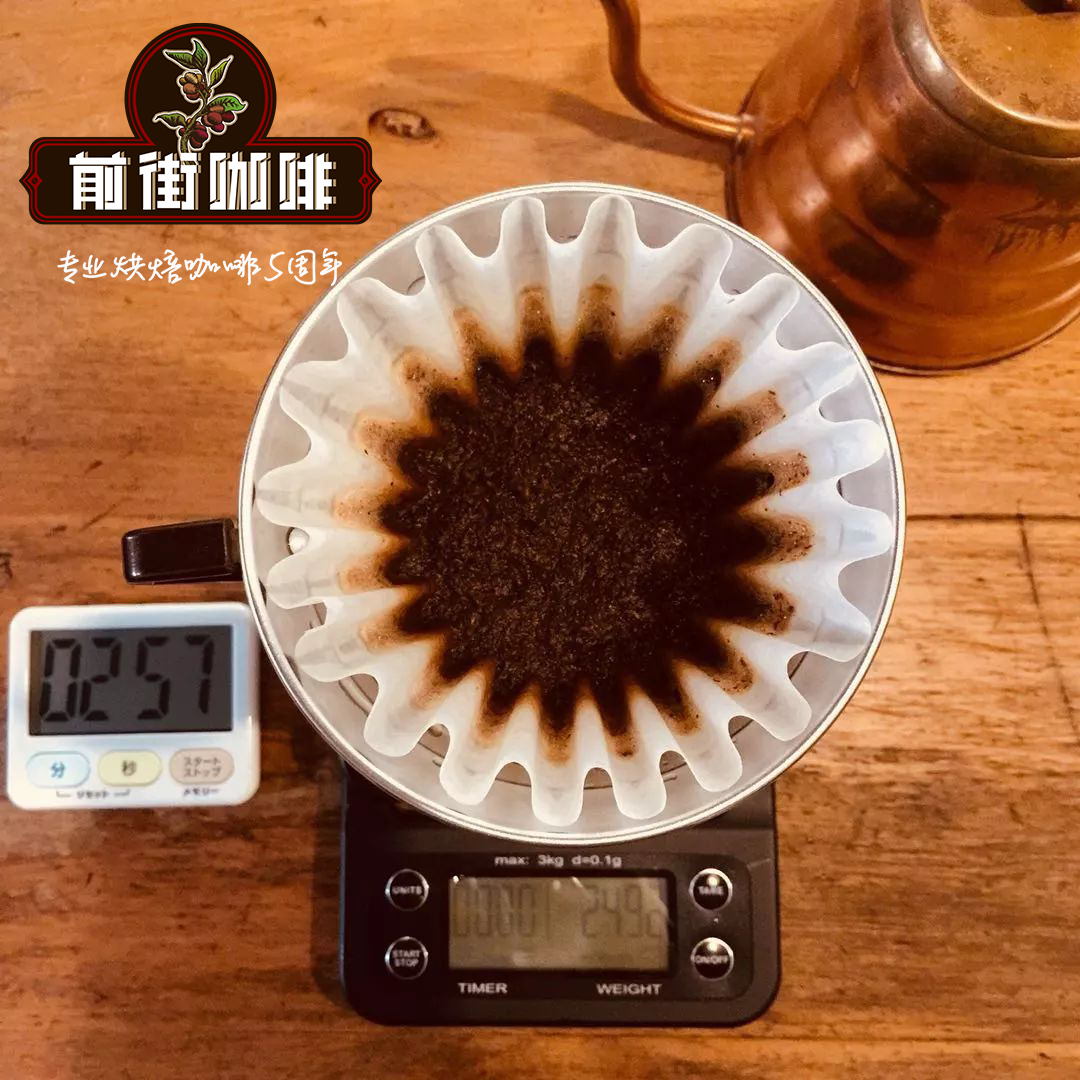A brief Analysis of the Origin and Flavor characteristics of Robosta Coffee Bean

Professional coffee knowledge exchange more coffee bean information please follow the coffee workshop (Wechat official account cafe_style)
Brief introduction of Qianjie-Robusta varieties and chlorogenic acid
Robusta
Originally there was only Arabica coffee, but at the end of the 19th century, a major pest occurred, and coffee growers began to explore varieties of coffee that were resistant to diseases and insect pests, thus giving rise to Robusta coffee. Robusta coffee is grown at low elevations and is resistant to diseases and insect pests, cold and drought. Because its caffeine content is much higher than that of Arabica, it is about 3.2%. Therefore, it is generally the first choice for instant coffee. Mainly planted in Vietnam, Indonesia and other countries
The average temperature of robusta coffee is between 20 and 26 degrees, and the best growth altitude can be as low as 100 meters. It has the advantage of cross-pollination cross-pollinating, and unlike self-pollinated Arabica coffee, robusta coffee is always adapted to its own growing environment-developing new insect-resistant substances, recovering from new plagues or environmental disasters, and creating new and satisfying properties to increase their yield. According to records, the Robusta coffee tree originated in the Congo in Africa, and Indonesia, Vietnam and Angola are currently its main producing countries.
Robusta is mostly used to make instant coffee, Robusta is secondary, but it is not necessary to classify it in this way, it is more appropriate to distinguish it according to your own preferences. In terms of taste, the United States and Japan are more likely to drink light Arabica coffee, while Europe prefers Italian concentrate made from a mixture of Arabica and Robusta.
The main components in raw coffee beans
Polysaccharides
The most abundant ingredient in raw beans is polysaccharides, accounting for 35%, 45%. Although it is called sugar, it is not sweet at all. The polysaccharides here refer to the fibers that make up the bones of plants. The content of polysaccharides in Arabica species is quite different from that in Canefa species.
Protein
The content of protein is 12%. Proteins and polysaccharides are important components of plant bones.
Fat
Raw coffee beans contain fat, and the fat in coffee beans is composed of linoleic acid, palmitic acid and so on. In terms of oil content, Arabica species have a relatively high fat content, accounting for 20%, while Carnefo species account for up to 10% fat content.
Chlorogenic acid
The contents of chlorogenic acids, Arabica species and Canefra species account for 5%, 8% and 7%, 11%, respectively. There are many kinds of chlorogenic acid, and some kinds of chlorogenic acid are found only in Canefa species.
Caffeine
Caffeine, which accounts for 0.9% of the Arabica species, 1.4% of the Arabica species, usually accounts for 2% of the Canefra species, and more than 3% of the time.
Amino acid
The content of amino acid is 1%-2%, and the amino acids in coffee beans are aspartic acid, glutamic acid and so on. In Arabica and Canefra, the proportion of various amino acids varies. The contents of these amino acids, chlorogenic acid and oligosaccharides also affect the coloring and flavor of coffee beans during roasting.
Knowledge expansion: caffeine accounts for 0.9% Mel 1.4% in Arabica: Carneflari usually accounts for 2%, more than 3% in more cases
In short: Qianjie is a coffee research hall, happy to share the knowledge about coffee with you, we share unreservedly just to make more friends fall in love with coffee, and there will be three low-discount coffee activities every month. The reason is that Qianjie wants to make more friends drink the best coffee at the lowest price, which has been Qianjie's tenet for 6 years!
END
Important Notice :
前街咖啡 FrontStreet Coffee has moved to new addredd:
FrontStreet Coffee Address: 315,Donghua East Road,GuangZhou
Tel:020 38364473
- Prev

Introduction to three categories of coffee beans does the action of chlorogenic acid affect the flavor of coffee?
Professional coffee knowledge exchange more coffee bean information please follow the coffee workshop (Wechat official account cafe_style) front street-introduction of the three major coffee bean varieties, chlorogenic acid ingredients 1. The origin of the Arabica species is the Abyssinia Plateau of Ethiopia (now the Ethiopian Plateau). It was mainly eaten as medicine in the early days, and baked and drunk in the 13th century.
- Next

Introduction to the Origin characteristics of Arabica Coffee beans the substances contained in coffee beans become fragrant
Professional coffee knowledge exchange more coffee bean information please follow the coffee workshop (Wechat official account cafe_style) front street-Arabica varieties, aromatic ingredients introduction I. types of coffee: coffee beans can be roughly divided into three categories: (1)? Arabica (Arabica) coffee tree, (2)? Robusta Coffee Tree and (3) Liberica Coffee
Related
- Beginners will see the "Coffee pull flower" guide!
- What is the difference between ice blog purified milk and ordinary milk coffee?
- Why is the Philippines the largest producer of crops in Liberia?
- For coffee extraction, should the fine powder be retained?
- How does extracted espresso fill pressed powder? How much strength does it take to press the powder?
- How to make jasmine cold extract coffee? Is the jasmine + latte good?
- Will this little toy really make the coffee taste better? How does Lily Drip affect coffee extraction?
- Will the action of slapping the filter cup also affect coffee extraction?
- What's the difference between powder-to-water ratio and powder-to-liquid ratio?
- What is the Ethiopian local species? What does it have to do with Heirloom native species?

